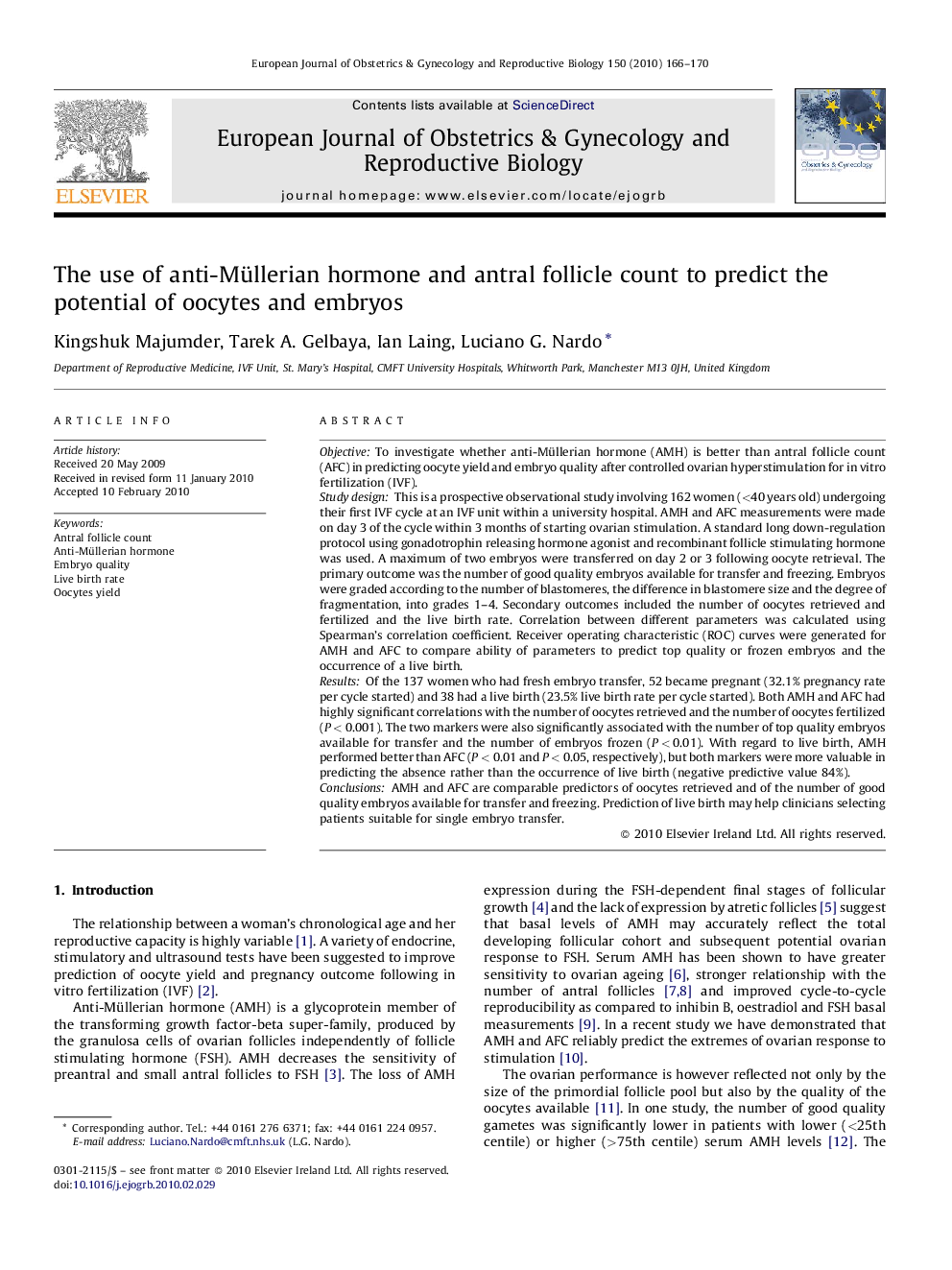| کد مقاله | کد نشریه | سال انتشار | مقاله انگلیسی | نسخه تمام متن |
|---|---|---|---|---|
| 3920918 | 1599852 | 2010 | 5 صفحه PDF | دانلود رایگان |

ObjectiveTo investigate whether anti-Müllerian hormone (AMH) is better than antral follicle count (AFC) in predicting oocyte yield and embryo quality after controlled ovarian hyperstimulation for in vitro fertilization (IVF).Study designThis is a prospective observational study involving 162 women (<40 years old) undergoing their first IVF cycle at an IVF unit within a university hospital. AMH and AFC measurements were made on day 3 of the cycle within 3 months of starting ovarian stimulation. A standard long down-regulation protocol using gonadotrophin releasing hormone agonist and recombinant follicle stimulating hormone was used. A maximum of two embryos were transferred on day 2 or 3 following oocyte retrieval. The primary outcome was the number of good quality embryos available for transfer and freezing. Embryos were graded according to the number of blastomeres, the difference in blastomere size and the degree of fragmentation, into grades 1–4. Secondary outcomes included the number of oocytes retrieved and fertilized and the live birth rate. Correlation between different parameters was calculated using Spearman's correlation coefficient. Receiver operating characteristic (ROC) curves were generated for AMH and AFC to compare ability of parameters to predict top quality or frozen embryos and the occurrence of a live birth.ResultsOf the 137 women who had fresh embryo transfer, 52 became pregnant (32.1% pregnancy rate per cycle started) and 38 had a live birth (23.5% live birth rate per cycle started). Both AMH and AFC had highly significant correlations with the number of oocytes retrieved and the number of oocytes fertilized (P < 0.001). The two markers were also significantly associated with the number of top quality embryos available for transfer and the number of embryos frozen (P < 0.01). With regard to live birth, AMH performed better than AFC (P < 0.01 and P < 0.05, respectively), but both markers were more valuable in predicting the absence rather than the occurrence of live birth (negative predictive value 84%).ConclusionsAMH and AFC are comparable predictors of oocytes retrieved and of the number of good quality embryos available for transfer and freezing. Prediction of live birth may help clinicians selecting patients suitable for single embryo transfer.
Journal: European Journal of Obstetrics & Gynecology and Reproductive Biology - Volume 150, Issue 2, June 2010, Pages 166–170